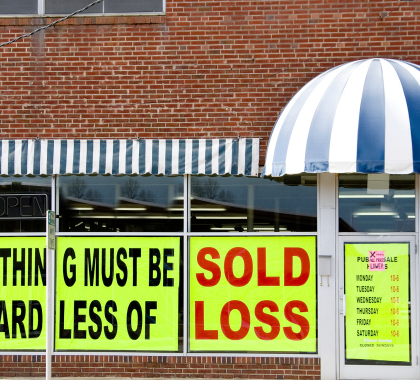California Gov. Jerry Brown (D) signed legislation on September 8 that slaps new, more-stringent restrictions on emissions of manmade greenhouse gases.
Brown signed two bills into law. The first is Senate Bill 32, which was sponsored by state Sen. Fran Pavley (D-Agoura Hills). It extends and expands California’s already ambitious target for reducing greenhouse-gas emissions. Under a law enacted in 2006, California is required to cut its greenhouse gas emissions to 1990 levels by 2020. The new law mandates greenhouse-gas emissions be reduced by 40 percent below 1990 levels by 2030.
The second measure signed by Brown is Assembly Bill 197, sponsored by Assemblyman Eduardo Garcia (D-Coachella). It increases legislative oversight of state regulators and imposes emissions reductions on refineries and other industries.
The oil industry and manufacturers strongly fought passage of the two laws. Environmental groups, the Obama administration, and hedge-fund manager and Democratic Party donor Tom Steyer vigorously lobbied in favor of the bills.
Steyer, who is rumored to be interested in seeking public office in California, was in the state’s capitol building while the bills were being debated on the House floor on August 23.
Commenting on Steyer’s support for the bills, state Assemblyman James Gallagher (R-Plumas Lake) told supporters of the legislation during the floor debate, “You are dancing to the flute of a rich hedge-fund manager who is running for governor.”
Setting Unreachable Emissions Target
Tom Tanton, director of science and technology at the Energy & Environment Legal Institute, says California’s new emissions standards are “restrictive” and burdensome.
“California continues its ill-fated climate quest, [imposing] even more restrictive carbon rules,” said Tanton. “What state leaders fail to recognize or account for is the new rules will accelerate the flight of productive activity outside the state, increasing global emissions, due to leakage.
“Legislators seem hell-bent on imposing heavy-handed regulations, even though it’s been pointed out to them freer markets perform better than government edicts in reducing emissions,” Tanton said. “Over the past 15 years, places with freer markets have reduced carbon emissions way more than areas with heavy-handed statist interventions.”
Craig Rucker, executive director of the Committee for a Constructive Tomorrow, says California’s renewable-energy goals are unrealistic and costly.
“California has set a renewable-energy goal it cannot reach at an economic price its citizens cannot pay,” said Rucker. “At some point in the not-too-distant future, California’s political class is going to have to clean up the mess it just made.”
Bette Grande, a former North Dakota state legislator and current research fellow in energy policy at The Heartland Institute, which publishes Environment & Climate News, says consumers, businesses, and workers will suffer as a result of the new standards.
“Gov. Brown and the environmental lobby in California are celebrating these new laws, but the future is darker for consumers, employees, and businesses,” said Grande. “It looks like California’s biggest export will continue to be it citizens.”
Bonner R. Cohen, Ph.D. ([email protected]) is a senior fellow at the National Center for Public Policy Research.





